Mimicry means the act of imitation, but in the animal world, it is defined as “the close external resemblance of an animal… to another animal, plant, or inanimate object.” Animals mimic other animals, plants, and other things, in a wide variety of ways, from visual mimicry to auditory or olfactory imitation. At its core, animal mimicry is always about survival, but sometimes that means using a clever bit of mimicry in order to catch food, and sometimes that means using mimicry to avoid being eaten. Predators will employ the former, known as aggressive mimicry, while prey will use defensive mimicry to protect themselves. Insects are the most common mimics of the animal kingdom, but they aren’t the only ones. Here are ten animals that use mimicry in the most interesting ways.
#10 Katydids
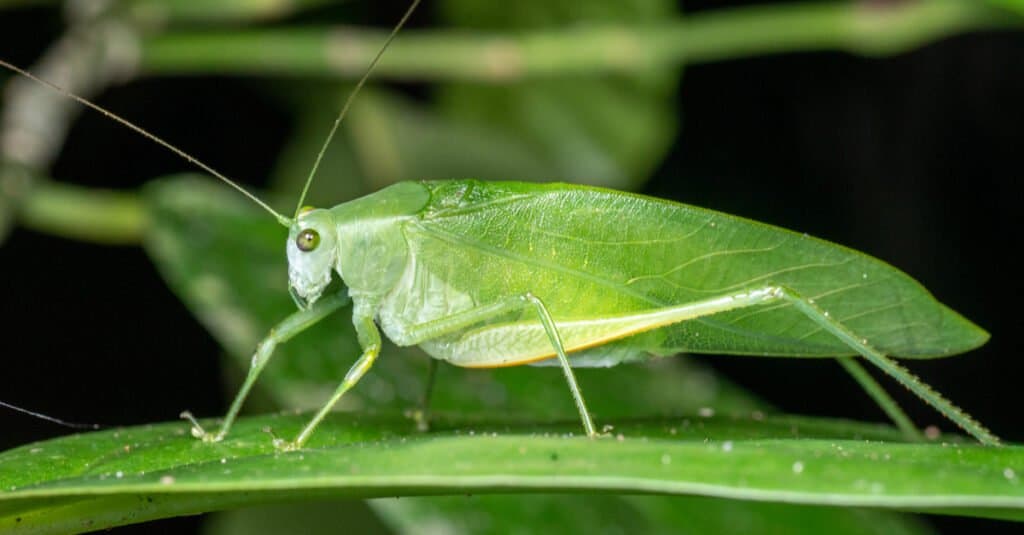
Katydids may be exceedingly loud, but their leaf-like camouflage is an effective layer of defense.
The Katydid is an unassuming little insect, so it may seem strange for it to take the top spot. However, Katydids get top billing because some kinds of Katydids use both aggressive and defensive mimicry to ensure their survival. They use their mimicry skills to imitate the female cicada response to the male cicada mating call, luring unsuspecting male cicadas into becoming dinner. However, Katydids also look like bright green tree leaves, protecting them from other predators.
#9 Moths
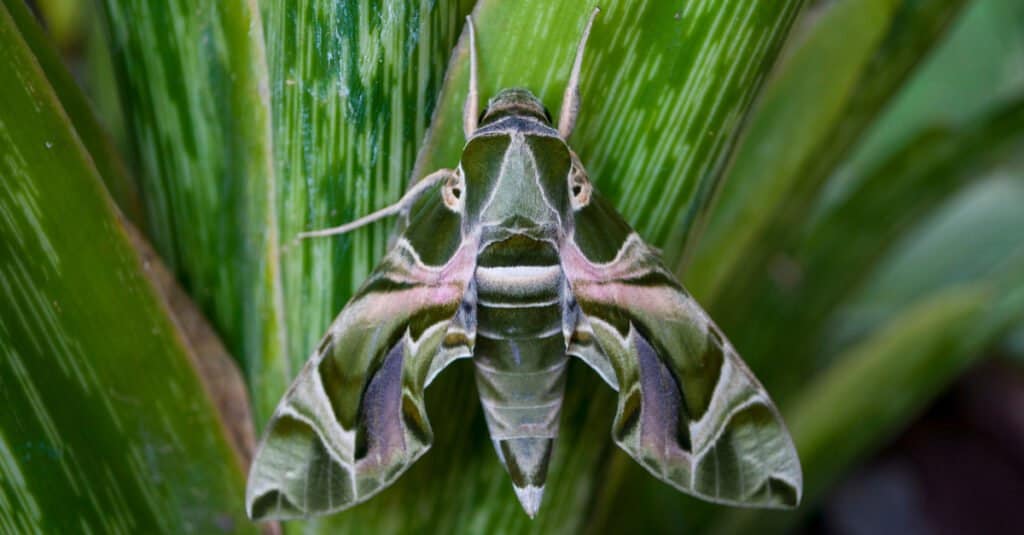
Despite the intricate design on some moths, they’re able to blend into flowers and plants.
Moths may be the absolute masters of defensive mimicry. Different moth species look like a vast array of other animals and plants. Moths may mimic owls, frogs, wasps, curled dead leaves, jumping spiders, mantis, cicada, and many other species. While many of them use body shape and coloring, many others have evolved some sort of eyespots on their wings to help them appear like a much larger animal. The eyespots also protect them because predators don’t like to attack prey that is looking back at them! Some moth species can even mimic the sounds of other moths, to protect them from predators that don’t like the mimicked species’ taste.
#8 Death’s-head Hawkmoth

A Death’s-head Hawkmoth easily blends into the bark of trees.
The Death’s-head Hawkmoth has similar markings to a bee, but that is not the primary mimicry it uses to survive. This moth actually emits an odor that mimics that of the honey bee, allowing it to enter a beehive and eat the honey without being attacked and killed for its thievery. Some have also theorized that the squeaking sound this moth makes sounds like that of a queen bee, further protecting it.
#7 Caterpillar

With an array of possible colors, caterpillars can disguise themselves as everything from flowers to sticks to bird droppings.
Since caterpillars are the larval stage of butterflies and moths, it is up to them to help ensure the survival of themselves and also the creatures they will eventually become. To that end, caterpillars have developed a variety of wonderful mimicry hacks to help them stay alive. Caterpillars can look like tiny branches and other plant parts. Their markings also frequently make them resemble baby snakes. In one case, they have evolved so cleverly as to look like bird droppings on a leaf!
#6 Spider-tailed Horned Viper
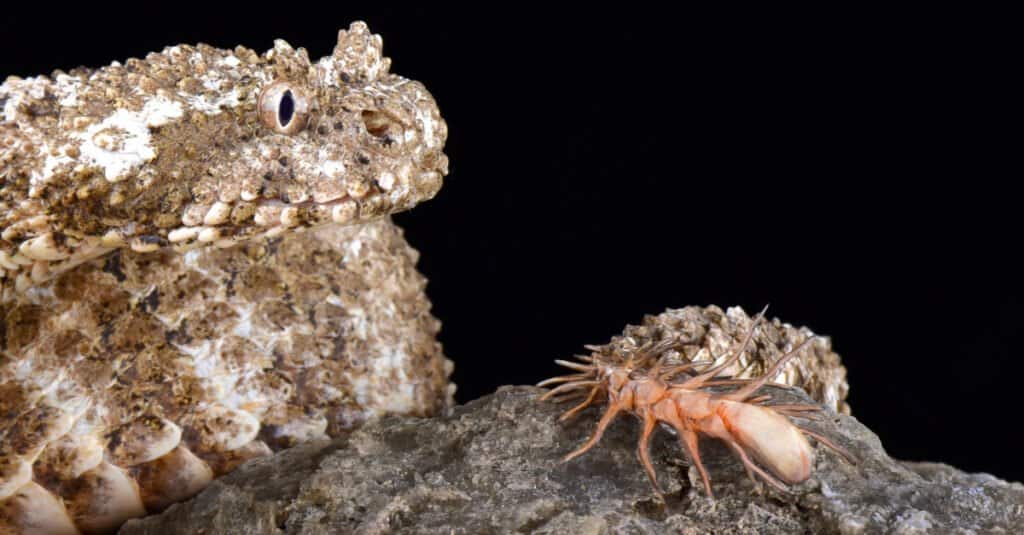
With a spider-like tail, the spider-tailed horned viper lures in birds that feed on insects.
The skin of the Spider-tailed Horned Viper mimics the rocks of the terrain where it lives, but that is not the only mimicry trick it knows. This fascinating snake lures birds of prey into its clutches by the use of a clever form of aggressive mimicry. As its name suggests, this snake’s tail has evolved to look like a spider. When there is a bird nearby, the Spider-tailed Horned Viper hides its body among the rocks and moves its tail around to imitate the movement of a large spider. When the bird comes in for the kill, the viper attacks the bird instead.
#5 Mantis
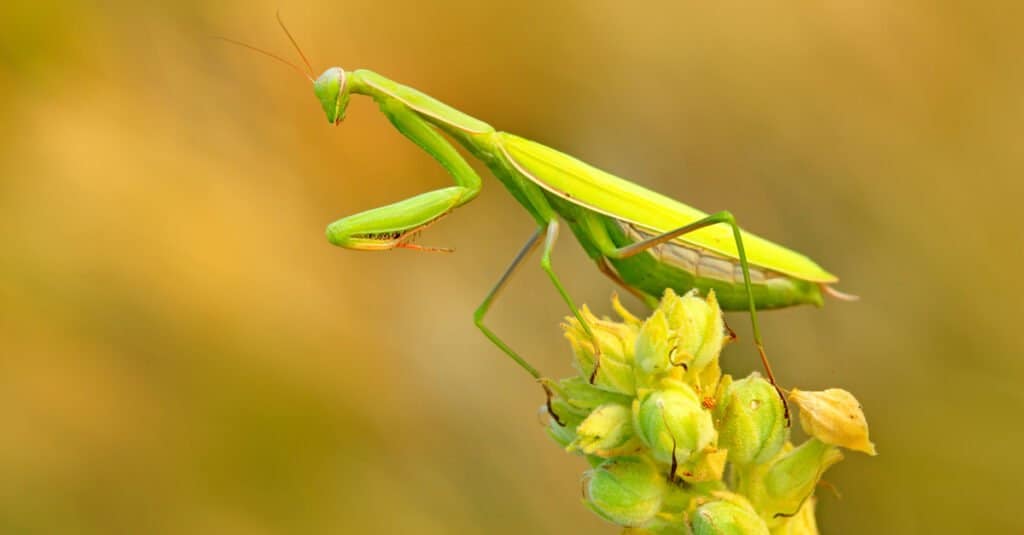
Though their bulging eyes and triangular heads make them stand out, the mantis is capable of blending into the foliage to ensnare prey or protect themselves from predators.
An excellent example of using mimicry for survival is the Mantis. Different species of Mantis can look like an assortment of plants and plant parts. Some look like dead leaves or sticks. Others look like a small shoot with leaves on it. All of these use disguises to avoid predators, though it is also useful for catching some prey unawares. The female Orchid Mantis, however, uses a very clever and beautiful method for aggressive mimicry. Their bodies not only look like orchids to lure in small pollinators to eat, but their coloration is actually brighter than the real flowers, making them a more attractive “flower” to entice their prey.
#4 Robber Fly

Robber flies imitate bees or wasps to prey on other insects.
Another example of aggressive mimicry is the Robber Fly in the genus Laphria. These flies look almost identical to bumblebees and they use this resemblance to feast on real bees, wasps, and assorted other bugs, who don’t fear them because they believe them to be bumblebees, who are no threat. Different Robber Fly species can resemble different insects, and they all use this mimicry to lure prey.
#3 Stick Bug
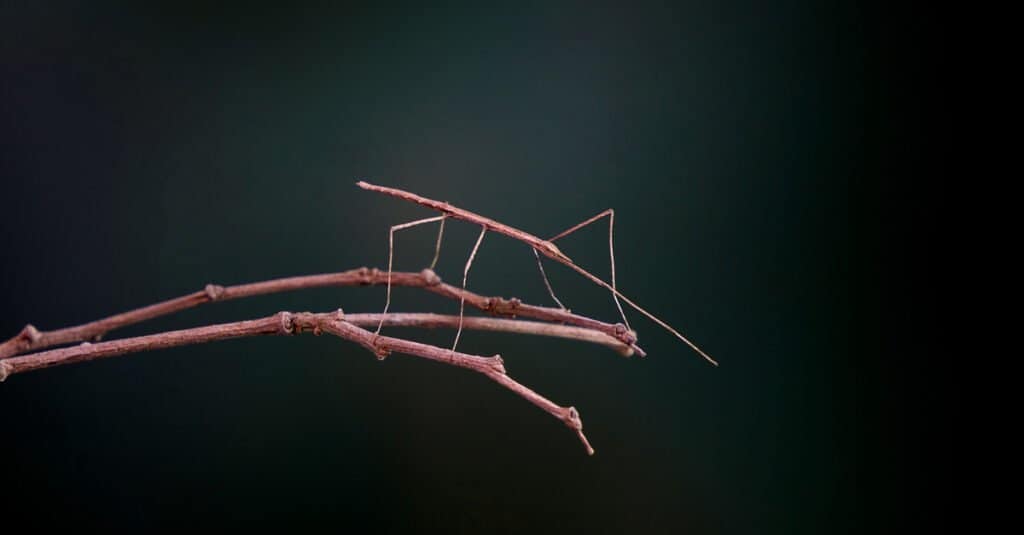
Stick insects began imitating plants as early as 126 million years ago.
Probably the most well-known of the insect mimics is the Stick Bug, also often called a Walking Stick. The name says it all. It is a bug that evolved millions of years ago to look like a stick. There are 3000 species of stick insect found all over the world. Because of this, not all stick insects look the same, since not all trees look the same. Stick bugs will look like sticks from the trees found in their native habitat. This also means they vary greatly in size, with the largest stick bug measuring an impressive 21 inches!
#2 Anglerfish

Dangling part of its body in front of other fish, the anglerfish lures in its prey by resembling something non-threatening.
Another commonly known animal using mimicry for survival is the Anglerfish. This fish is quite unattractive to the human eye, but its mimicry system makes it very attractive to unsuspecting prey. The female Anglerfish lives deep in the ocean and finds food by using a piece of the dorsal spine, which has a glowing tip and dangles in front of her mouth like a fishing pole to lure in other fish up to twice her size.
#1 Viceroy Butterflies
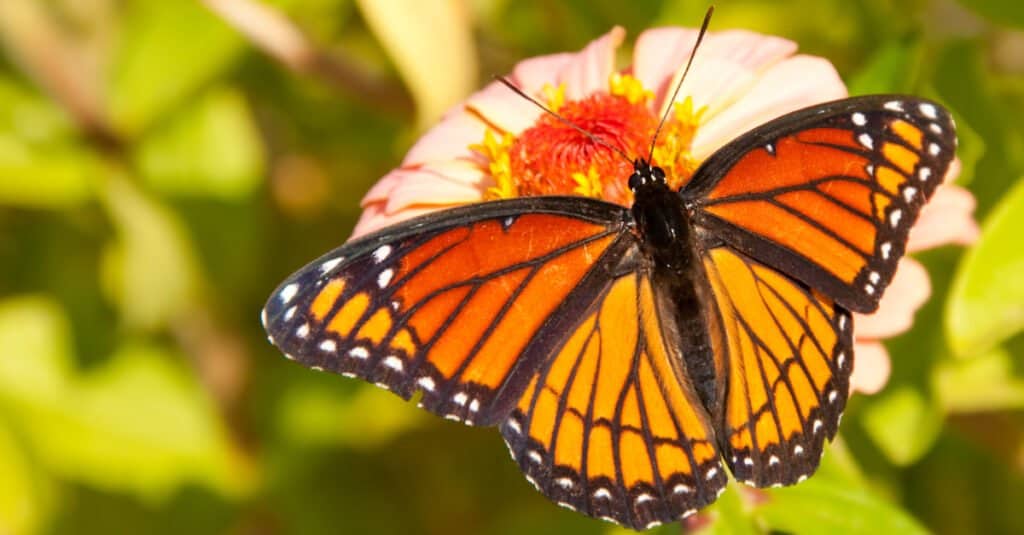
Harmless viceroy butterflies use Batesian mimicry to defend themselves against predators.
Most American schoolchildren learned about this first entry on our list while still in grammar school. The Viceroy butterfly would make a tasty treat for many birds and other predators that like insects, but over time it has evolved to look nearly identical to another insect that isn’t so tasty, the Monarch Butterfly. The markings aren’t an exact match, but the imitation is enough to help the Viceroy survive most cursory inspections.
Monarch butterflies lay their eggs on Milkweed plants, which are toxic to most insects. However, the Monarch has adapted so that its larvae eat Milkweed. As a result, they become toxic to the birds that would prey on them. They pass this trait on when they pupate into a butterfly. Birds learn to avoid eating Monarchs as doing so makes them sick. The Viceroy takes advantage of this system by looking nearly the same as a Monarch.
Other Animals that Use Mimicry
While our list covers the top 10 animals we think utilize mimicry the best, there are other animals that didn’t quite make the cut, but are also talented at mimicry:
Alligator
Snapping turtle
Chameleon
Foureye butterflyfish
Harlequin frog
Ladybird beetle
Kingsnake
Leafy sea dragon
Mimic octopus
Northern pygmy owl










